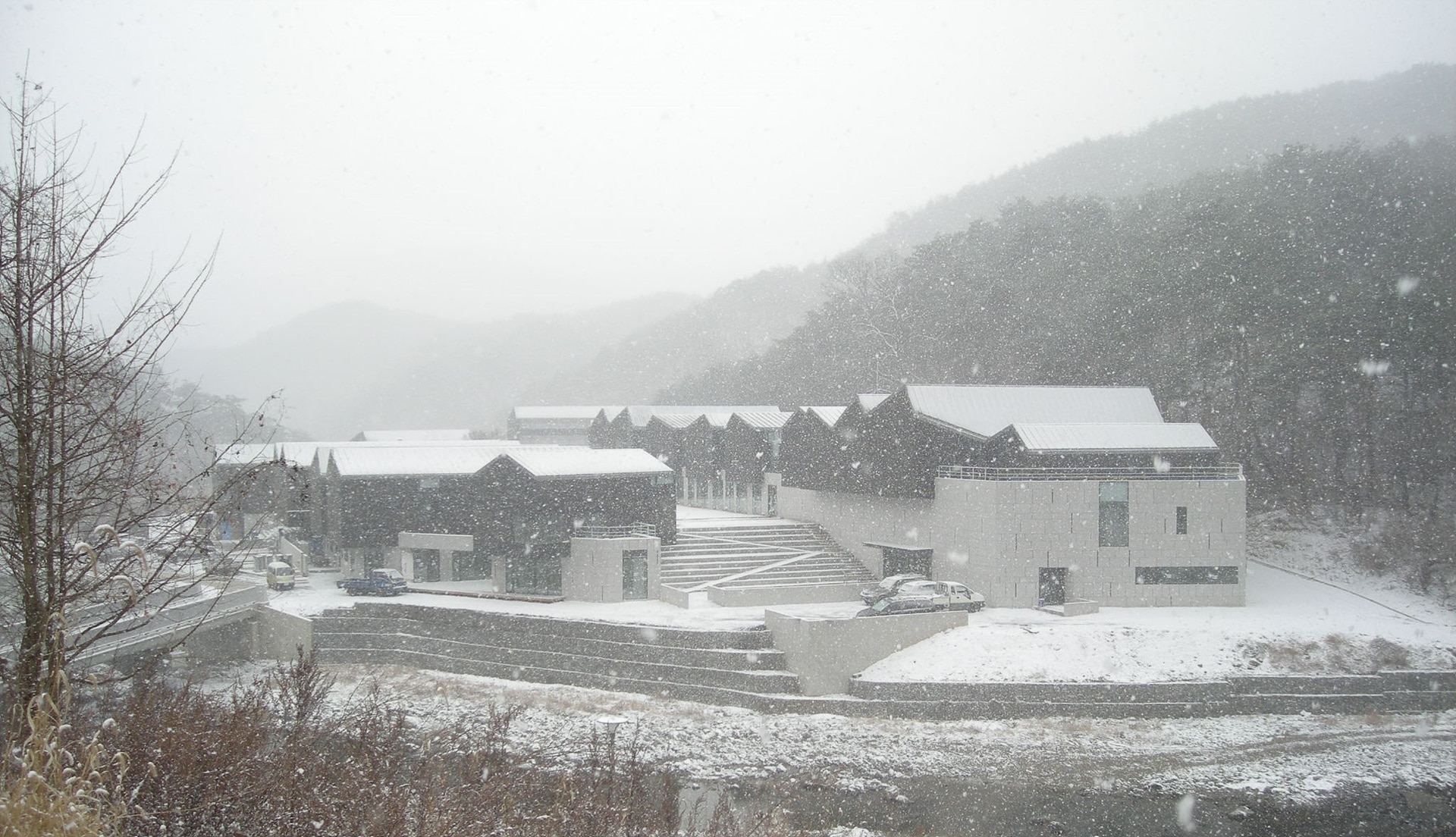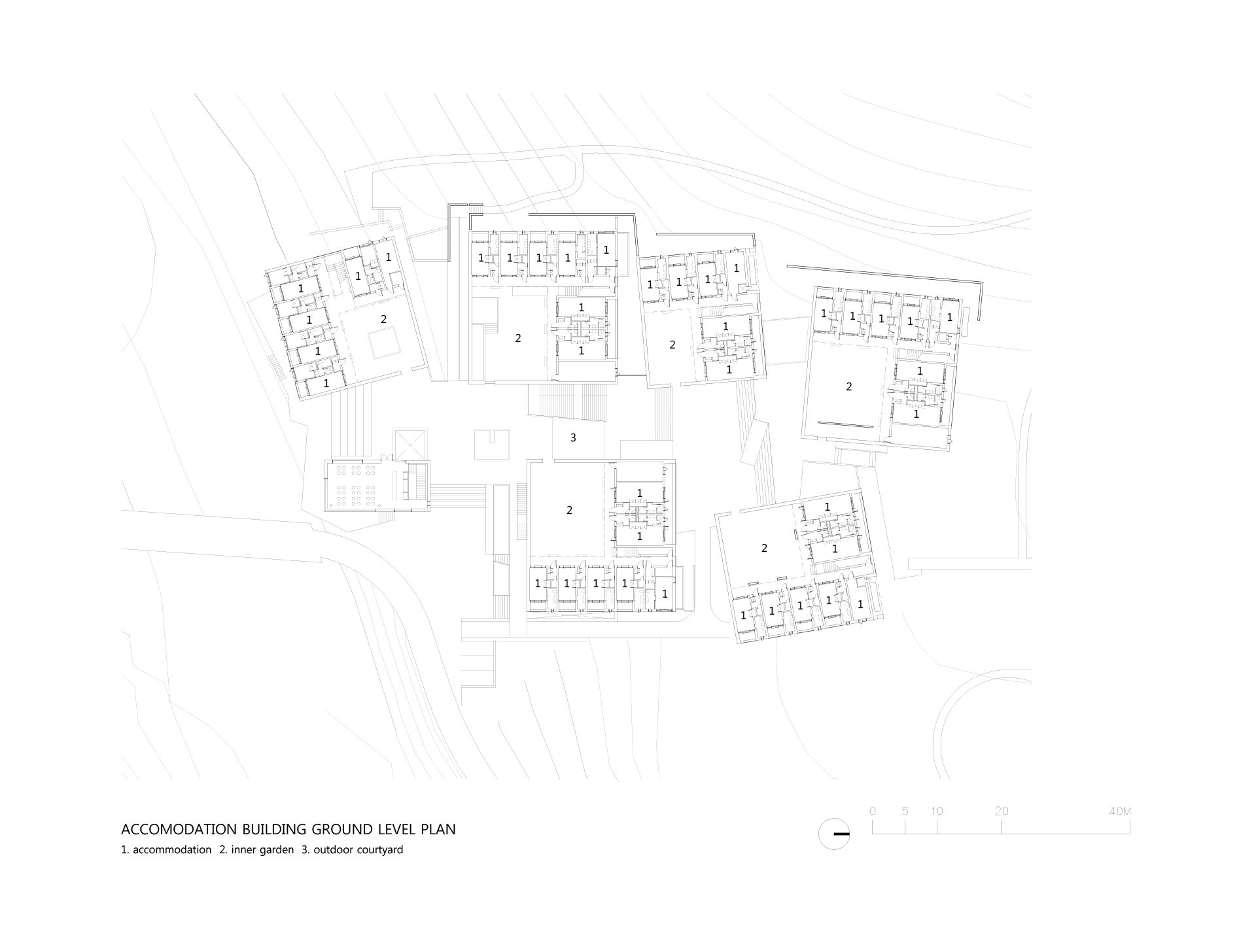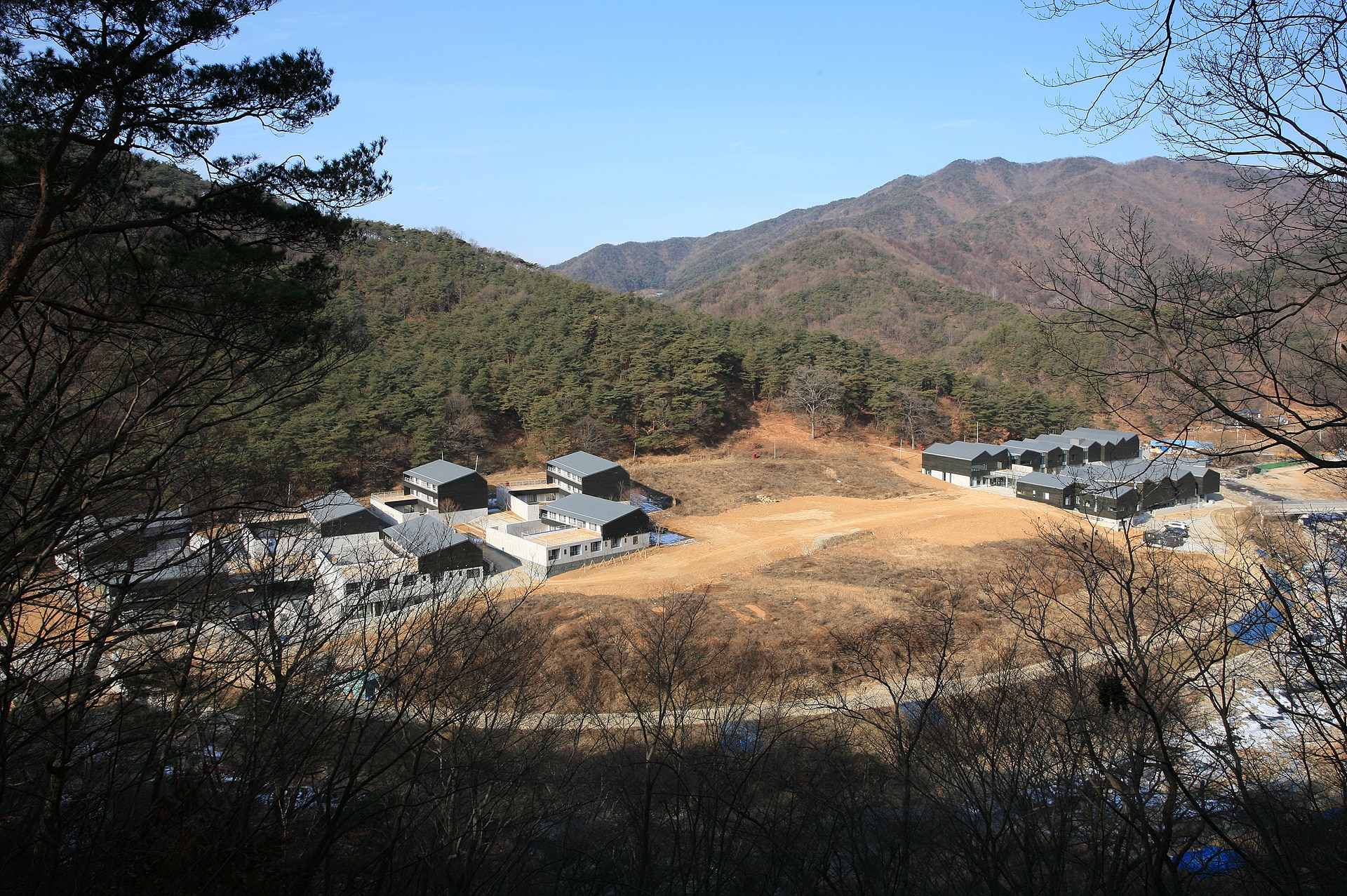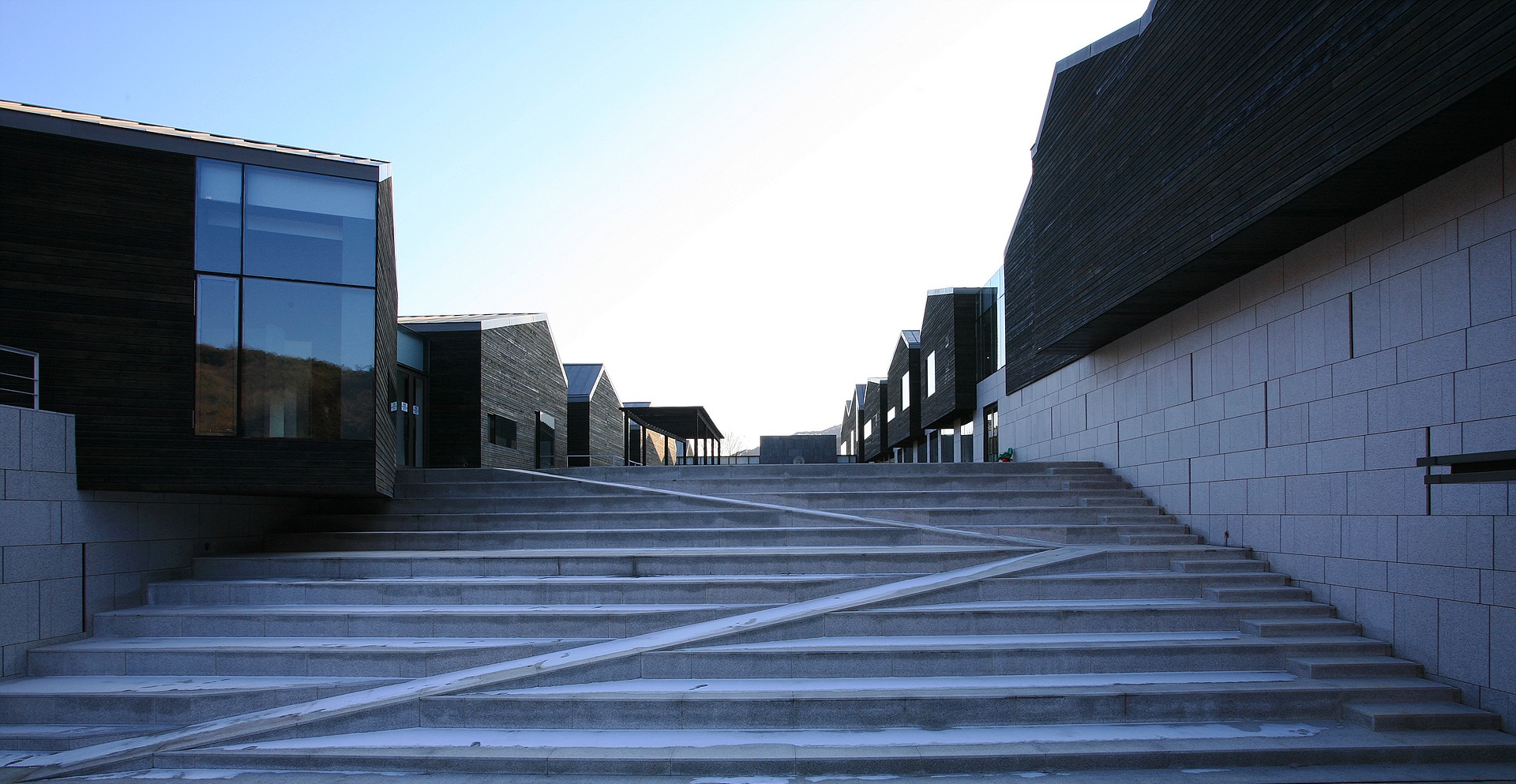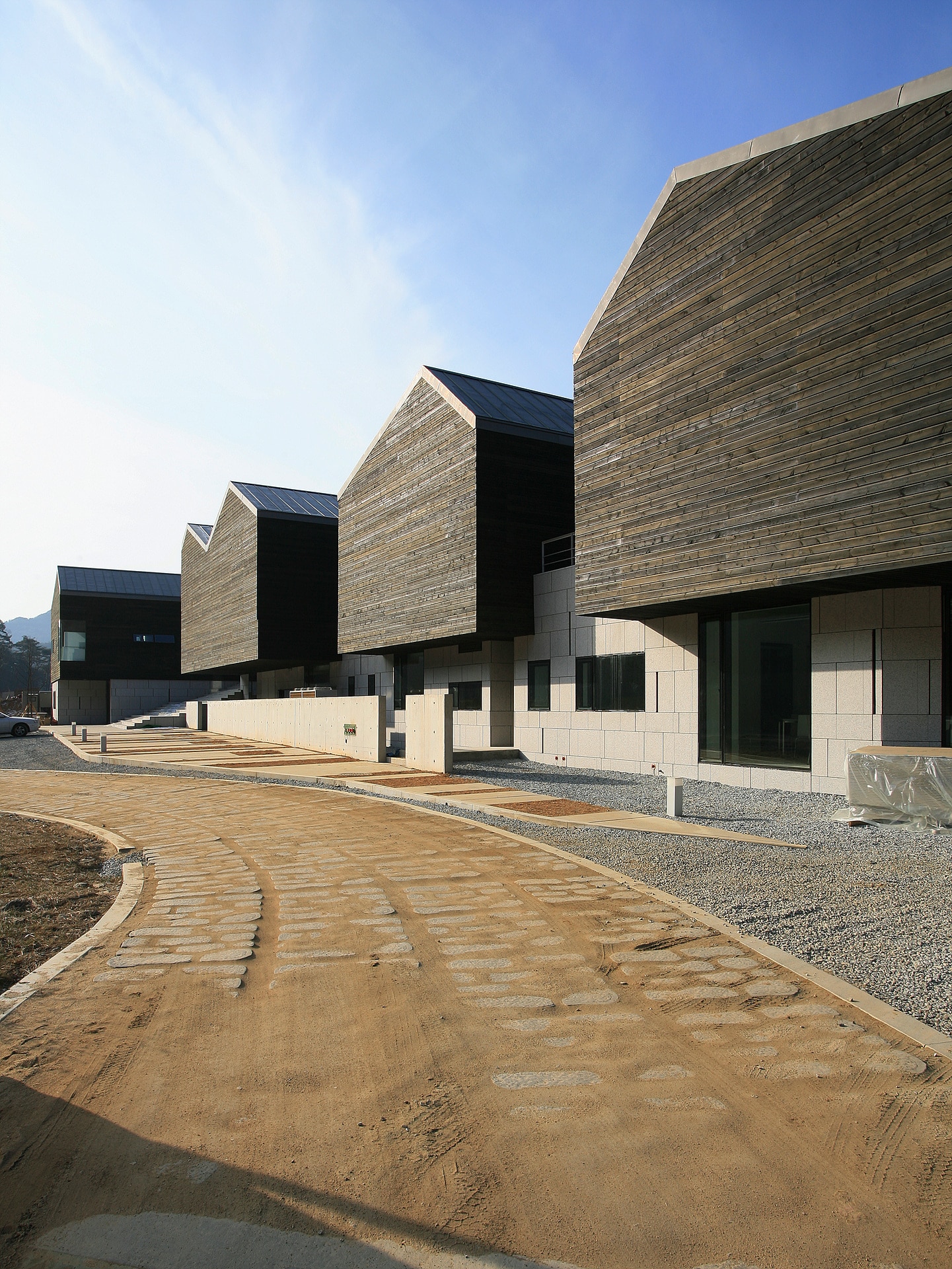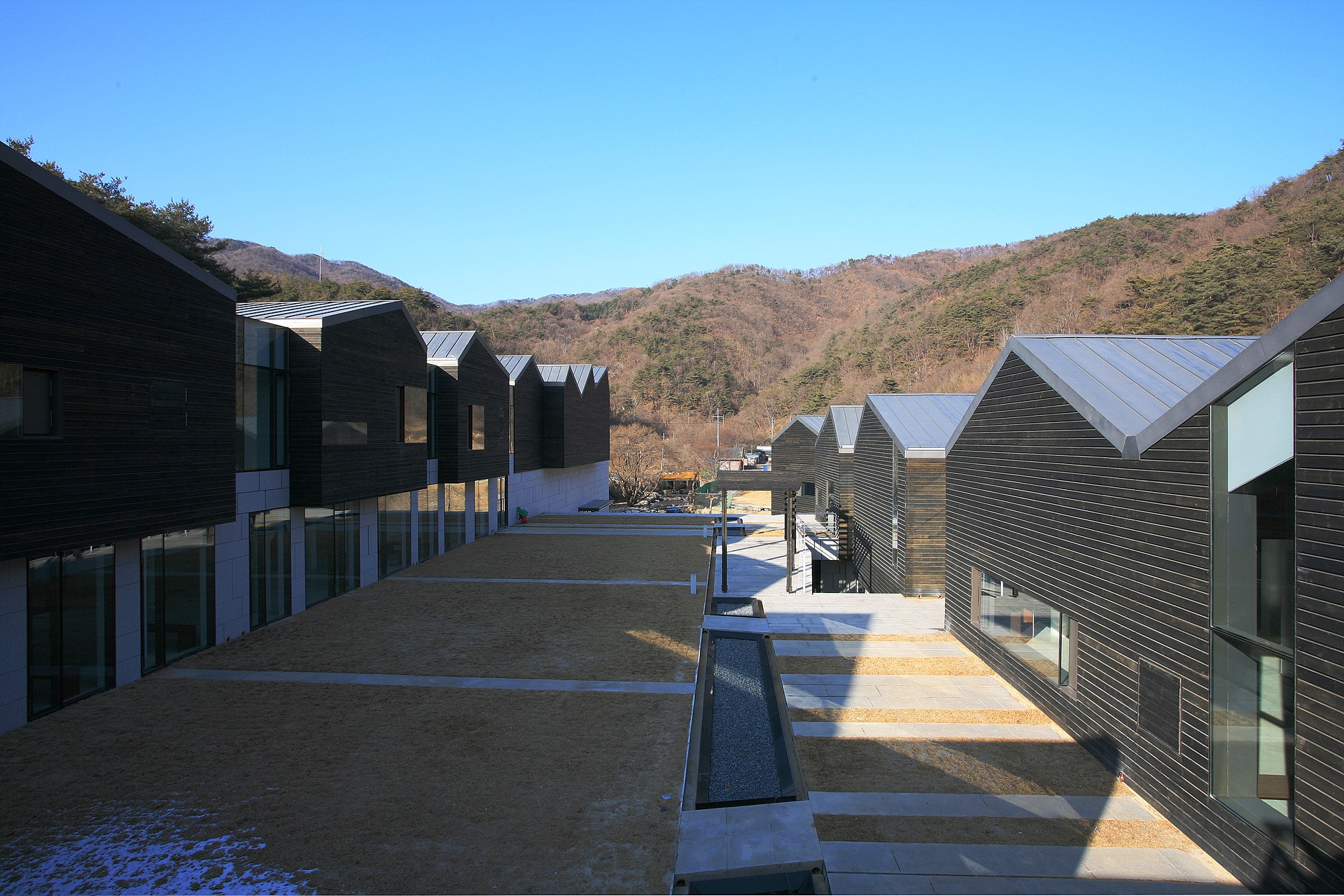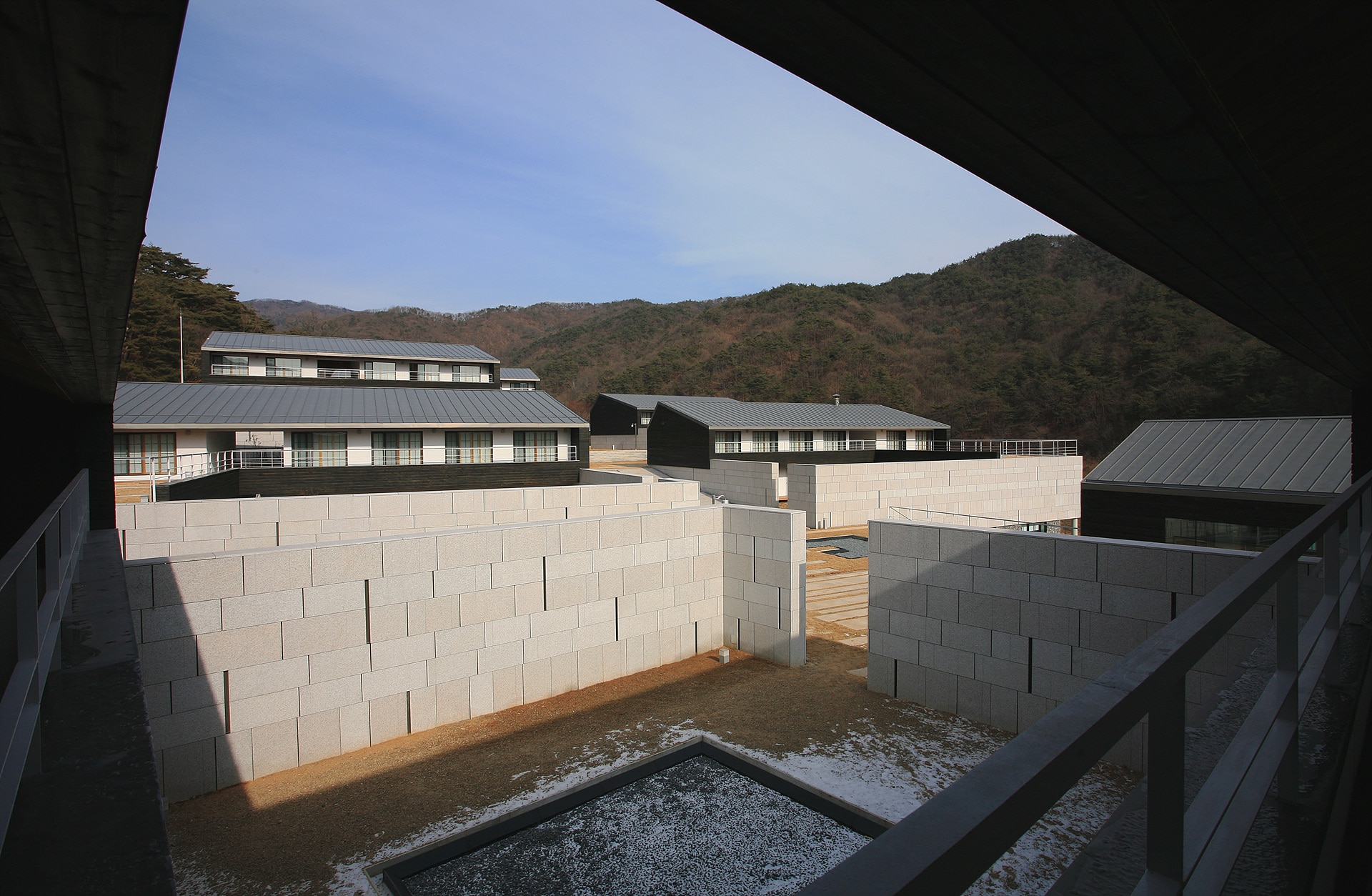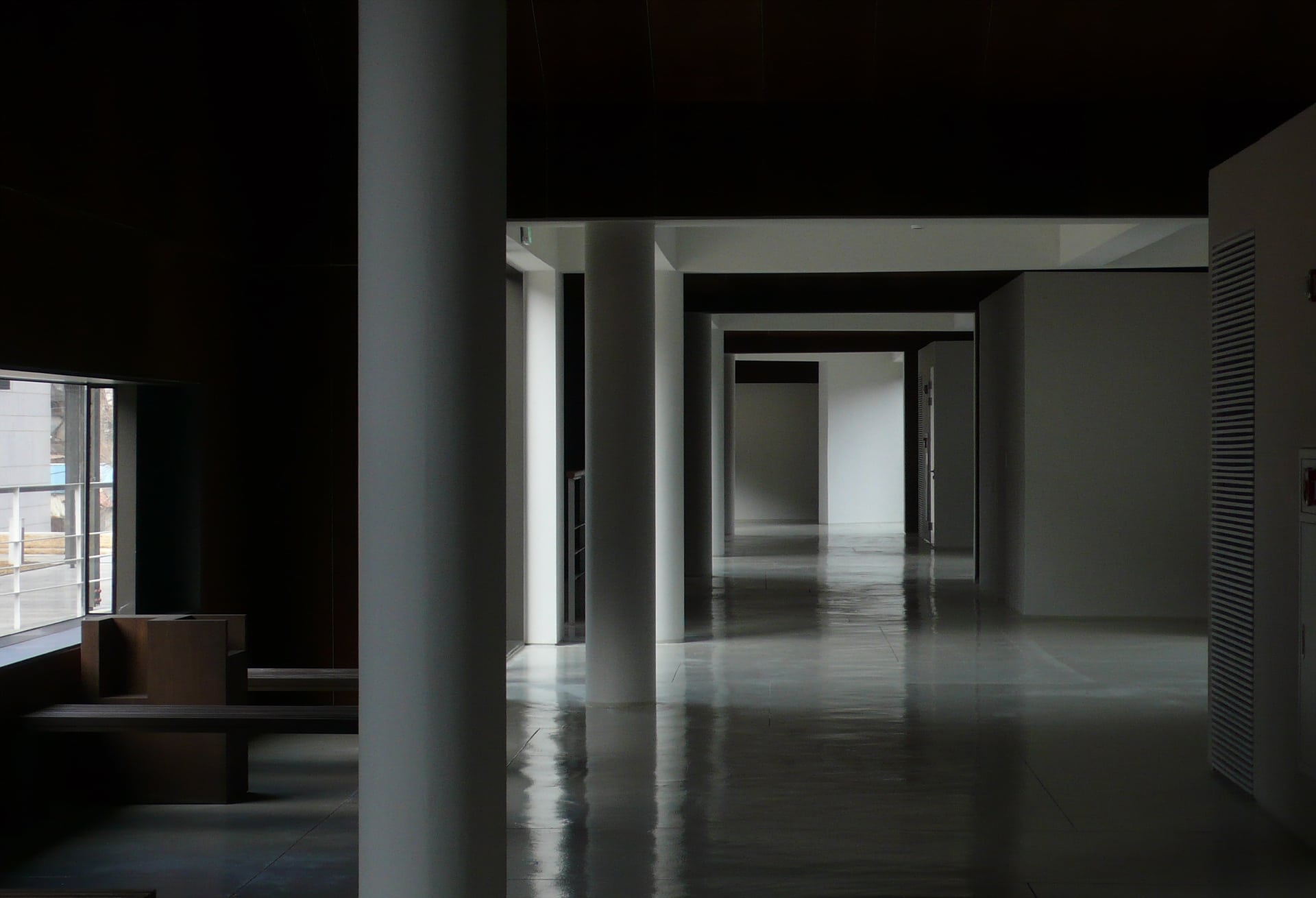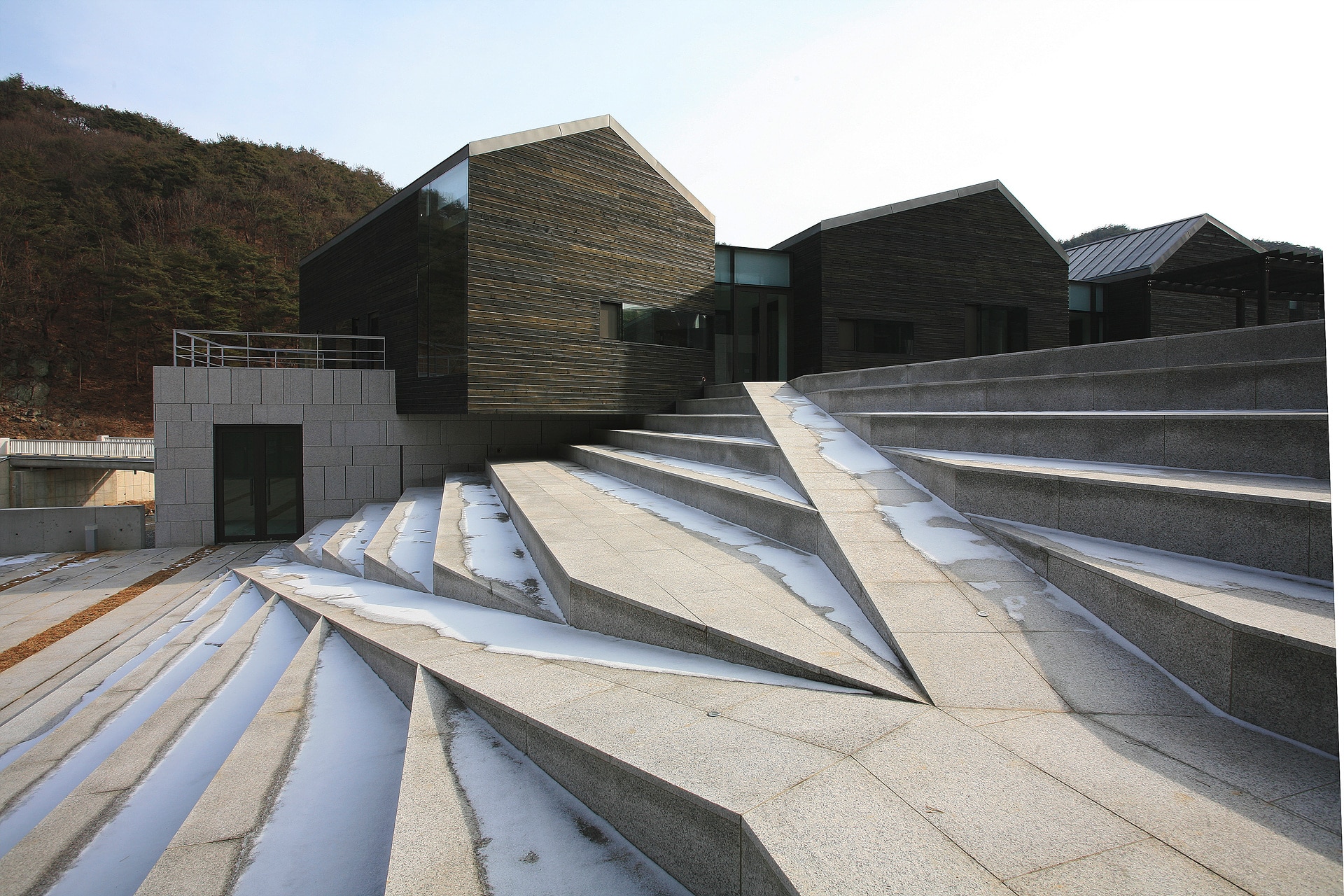Traditional Buddhism Center of Jogye Order
| 완공년도 | 2008 |
| 위치 | 충청남도 공주 |
| 대지면적 | 14,867m² |
| 건축면적 | 5,745m² |
| 연면적 | 9,600m² |
| Structural engineer | 서울구조 |
| Mechanical engineer | 세아엔지니어링 |
| Electrical engineer | 우림 전기 |
| Lighting design | 뉴라이트 |
| 완공년도 | 2008 |
| 위치 | 충청남도 공주 |
| 대지면적 | 14,867m² |
| 건축면적 | 5,745m² |
| 연면적 | 9,600m² |
| Structural engineer | 서울구조 |
| Mechanical engineer | 세아엔지니어링 |
| Electrical engineer | 우림 전기 |
| Lighting design | 뉴라이트 |
불교건축이 현대건축에서 공백으로 기록된 까닭에 조선시대의 숭유배불정책의 사유가 크긴 해도 현대에 이르러서도 불교계의 옛 형태에 대한 과도한 집착은 오히려 불교를 축소시키고 본질에서마저 어긋나 있는 것 아닐까? 그래서 나를 이 프로젝트의 건축가로 선택하느냐 마느냐는 그 관행을 벗어나는 중요한 순간이었다. 힘든 과정이 지나서 조계종의 지도자들은 진보를 택하고 이 건축을 받아들였다. 나는 불교건축이 지향해야 하는 목표에 대해 잘 알고 있다고 믿는다. 비움, 불교의 본질이었다. 그래서 새롭게 구축되는 비움은 모든 조건에도 불구하고 이 건축의 중요한 개념이 되어야 했다. 대지는 설계 전에 이미 조선시대 기와가마 터가 다량으로 발굴된 터라 가운데 많은 부분이 건축금지 지역으로 지정되었다. 불교계로서는 불행하게 여겨지는 분위기였지만 나로서는 오히려 다행이었다. 자연히 대지의 중앙부분을 크게 비울 수 있었기 때문이며 자연스레 건축은 끝 부분으로 몰리게 되었다. 그래서 비움의 드라마틱한 시퀀스가 시작될 수 있었다. 대단히 많은 마당들이 구성되어 있다. 여기에는 건축은 그 마당을 한정하는 요소며 이곳저곳의 마당들은 스스로 존재방식을 가지고 서로 연결되면서 주변의 아름다운풍경과 거주의 흔적을 담는다. 그리고 그 비움의 공간을 향하는 통로는 수시로 자연과 접하며 걷는 자에게 삶의 아름다움을 전하며 스스로를 성찰하게 한다. 그 자체가 종교 아닐까? 재료 또한 나무와 돌과 흙이다. 결국은 땅으로 스며들어 사라지는 것들이다. 남는 것은 비움이다.
Although the traditional Korean Buddhist architecture remains blank in contemporary architecture and the influence of the pro-Confucianist and anti-Buddhist policy of the Kingdom of Joseon (1392-1910) remains largely untouched, the Buddhist circle seems to be obsessed with the old forms of architecture even today. Would not it be contrary to the respect of the Buddhist teachings and the essence of Buddhism? As such, whether or not who would be chosen as the architect of the project was a critical moment of leaving away from the established practices. After a difficult process, the leaders of the Jogye Buddhist Order made a progressive decision and accepted this architectural project. What is the most important in the Buddhist architecture? It is nothing but “emptiness,” and this is the essence of Buddhism. So the newly embodied emptiness had to be an important concept of this architectural structure despite all conditions and requirements. Much of the site of this architectural structure was already designated as a prohibited area of construction because many roof tile kilns of the Kingdom of Joseon were found before starting design. The Buddhist circle seemed to be a bit disappointed, but it was rather fortunate. Naturally, the central part of the site should be emptied widely, and the architectural structure was driven to the edge of the site. This lead to the beginning of a dramatic sequence of emptiness. There are a lot of courtyards in this architecture. Here, several buildings are the factors that limit the yard, and the yard around here is connected to each other by its own way of existence, and carries traces of beautiful scenery and habitation around it. And the passage to the space of emptiness often touches the nature, and gives the visitor the beauty of life and a moment of reflection on himself. Could it be a religion in itself? Wood, stone and earth ― they are the building materials. They all eventually change in form, and disappear into the earth. What remains is emptiness.
